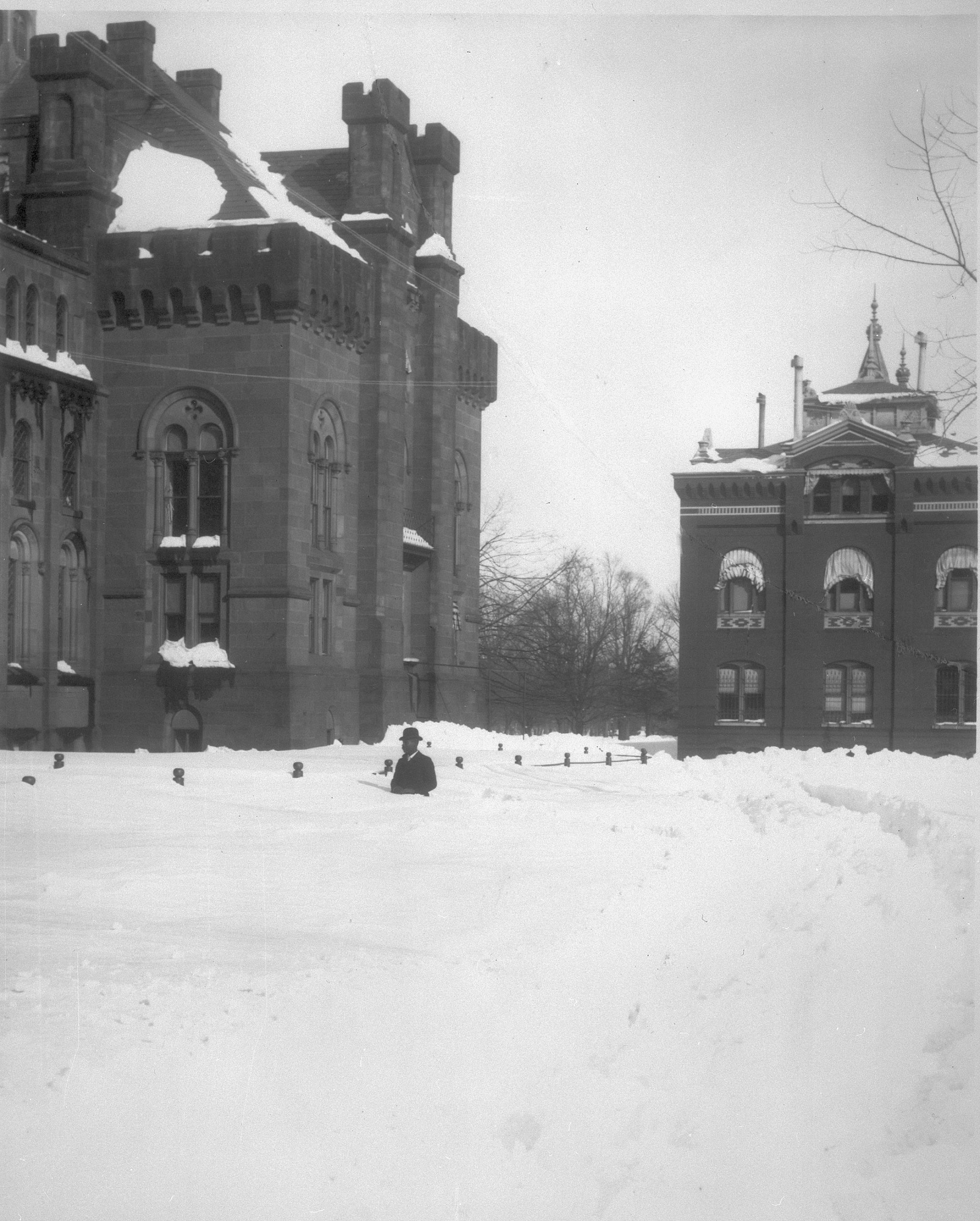Episode 1: January 26, 1922
A Century Ago, Compact Negotiations Begin
By Eric Kuhn and John Fleck
On January 26, 1922, representatives of seven western states and the United States Government met for the first time in Washington, D.C., to begin the development of what has been called the "cornerstone" of western water development - the Colorado River Compact.

As the Colorado River Compact Commissioners gathered in
Washington a century ago, a storm settled over the nation's
capital. Photo courtesy Smithsonian.
Herbert Hoover’s words a century ago were chosen with care. Might it be possible, he wondered, for the state officials gathered around him that day “to agree upon a compact between the seven states of the Colorado Basin, providing for an equitable division of the water supply of the Colorado River”?
It was Thursday January 26th, 1922, at 10:00 AM, as the eight members of the Colorado River Commission met in Washington, D.C. gathered for the first time at the offices of the United States Department of Commerce. Over the next 11 months they would negotiate the details of the Colorado River Compact which they signed on November 24th, 1922.
“It is hoped that such an agreement,” Hoover added “… will prevent endless litigation which will inevitably arise in the conflict of states rights.”
Hoover, then the Secretary of Commerce, had been appointed by President Warren Harding to be the commissioner from the United States and lead the effort. In addition to Hoover, each state sent a commissioner appointed by its governor:
- Arizona, W. S. Norviel, State Water Commissioner
- California, W. F. McClure, State Engineer
- Colorado, Delph E. Carpenter, Special Water Counsel
- Nevada, Colonel James G. Scrugham, State Engineer
- New Mexico, Steven B. Davis, State Supreme Court Justice
- Utah, R. E. Caldwell, State Engineer
- Wyoming, Frank C. Emerson, State Engineer
Hoover’s opening statement was carefully prepared.
While there is possibly ample water in the river for all purposes if adequate storage is undertaken, there is not a sufficient supply of water to meet all claims unless there is some definite program of water conservation.
In the language of the day, “conservation” meant something very different than its modern usage. It meant, quite simply, building dams to “conserve” water that would otherwise be “wasted” to the sea. But the enormity of the dams contemplated left an equally enormous institutional task – developing the rules needed to allocate, and therefore share, the river’s waters.
The Federal Role
As to the federal role, Hoover mentioned four interests:
- control of navigation
- protection of US treaty obligations
- development of national irrigation projects
- power development on public lands
“The sole object of the Federal Government,” Hoover said, “is to secure development of the river in the interest of all.” After his opening statement, Hoover was formally elected Commission Chairman.
The Commissioners Speak
Each of the state commissioners gave an opening statement.
Hoover first turned to Colorado’s Carpenter, acknowledging his role in the creation of the commission. Agreeing with Hoover, Carpenter stated “the prime object of the creation of this Commission was to avoid future litigation among the states.” He added that “facts are always the basis of legal problems and hence the facts must be studied.” The need to avoid litigation and study the facts was a common theme to the statements of all seven state commissioners.
The commissioners then heard from Arthur Powell Davis Director the U.S. Reclamation Service and nephew of the legendary John Wesley Powell. Davis, who began studying the Colorado River Basin in 1895, impressed the commissioners with his knowledge of the Colorado River. He emphasized Hoover’s conclusion that with conservation the river had a sufficient supply of water to irrigate all lands that could be “favorably reached.” Davis suggested the Commission could successfully apportion the river’s waters among the seven states based on the number of irrigable acres in each state. Over the next six meetings, they would pursue this approach without success.
The Commission then heard from representatives of the Army Corps of Engineers, the Federal Power Commission, and finally the U.S. Geologic Survey. In a short statement, Nathan Grover, Chief of the Hydrologic Branch, told the Commission that the resources of his agency were at their disposal.

